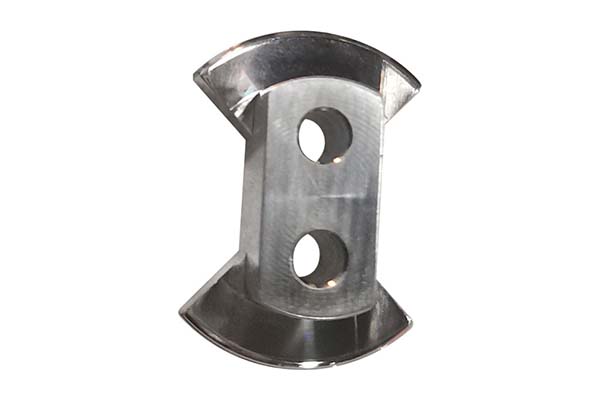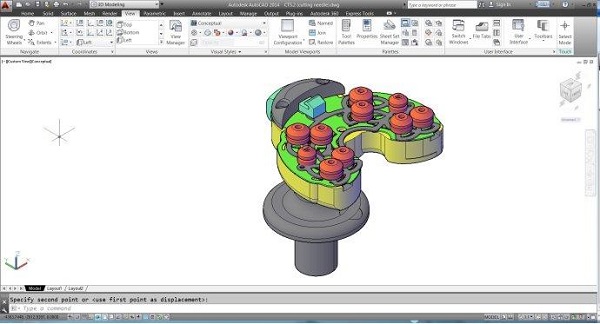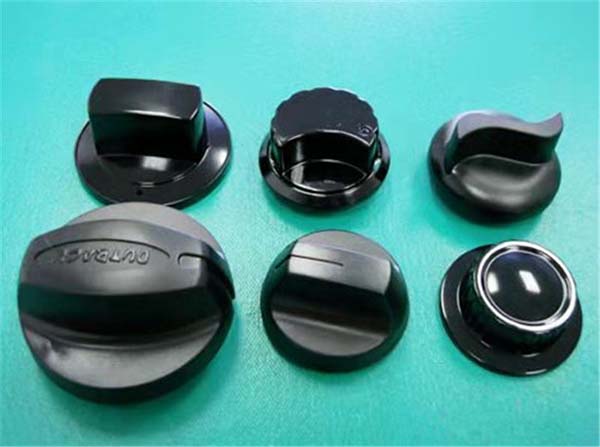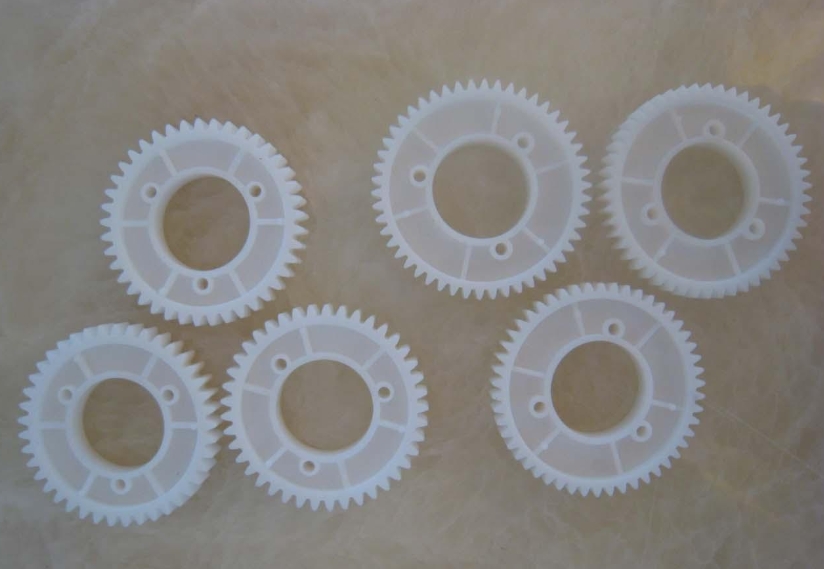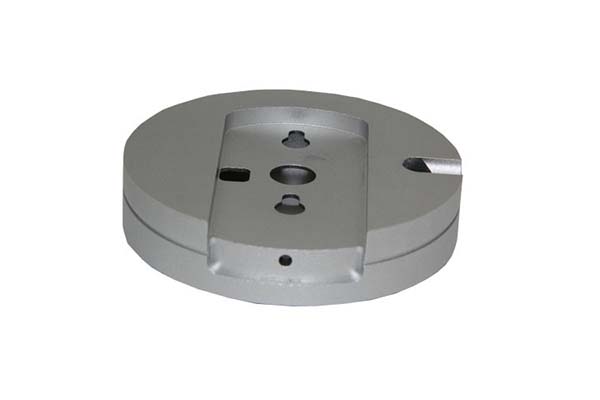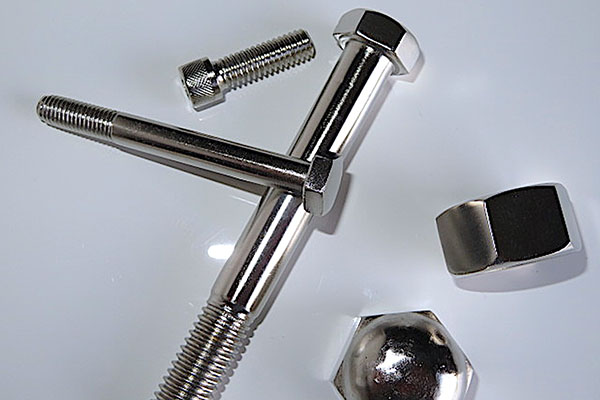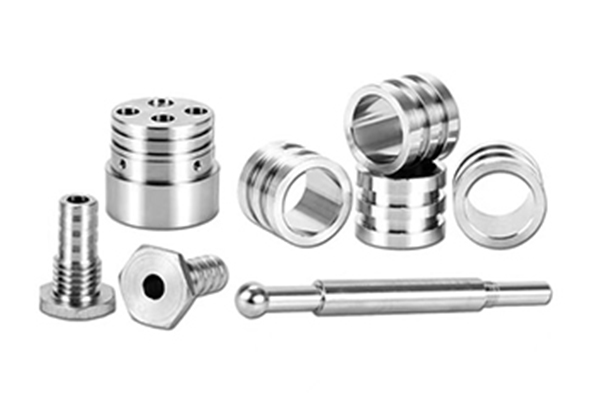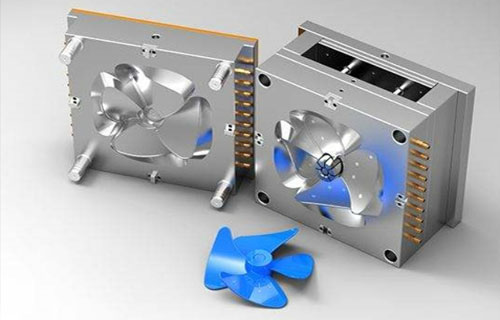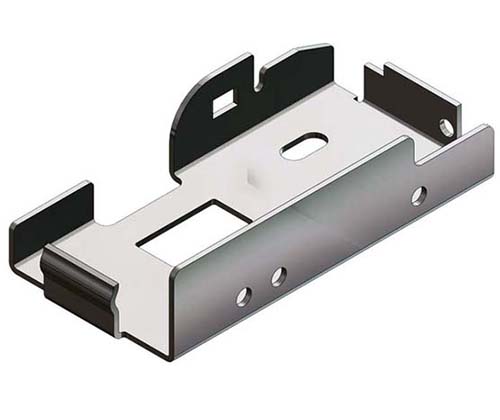1. Introduction to Rapid Prototyping in Mechanical Engineering
1.1 Defining Rapid Prototyping
Rapid Prototyping (RP) in mechanical engineering is a revolutionary approach that enables the quick and accurate transformation of digital designs into physical models or functional prototypes. By making use of advanced technologies such as 3D printing (including FDM - Fused Deposition Modeling, SLA - Stereolithography, and SLM - Selective Laser Melting), CNC (Computer Numerical Control) machining, and laser sintering, RP serves as a bridge between the virtual world of CAD (Computer - Aided Design) models and the tangible realm of real - world objects.
In contrast to traditional methods of manual modeling or subtractive machining, which are not only time - consuming but also have limitations in terms of the geometric complexity they can achieve, RP offers a more efficient alternative. For Yigu Technology instance, in traditional subtractive machining, a significant amount of material is removed from a larger block to create the desired shape. This process can be extremely time - consuming, especially for complex geometries, and often results in a large amount of wasted material. On the other hand, RP technologies like 3D printing work by adding material layer by layer, allowing for the creation of highly complex shapes with minimal material waste.
RP allows engineers to rapidly validate their designs, test the functionality of components, and iterate on their concepts in a much shorter time frame. In the automotive industry, for Yigu Technology example, engineers can use RP to quickly produce prototypes of new engine components. They can then test these prototypes for performance, such as heat dissipation and fuel efficiency, before moving on to full - scale production. This not only saves time but also reduces the cost associated with making design changes late in the production process. As a result, RP has become an essential tool in modern mechanical engineering, driving innovation across a wide range of industries, from automotive manufacturing to aerospace engineering.
1.2 The Evolution of Prototyping in Mechanical Design
The history of prototyping in mechanical design has been marked by a series of significant advancements, closely tied to the development of technology. In the early days, prototyping mainly involved the creation of handcrafted scale models. Skilled artisans would use materials like wood, clay, or metal to build physical representations of mechanical designs. These models were painstakingly crafted by hand, often requiring a great deal of time and skill. For example, in the design of early automobiles, scale models were built to visualize the overall shape and layout of the vehicle, but the process of creating these models could take weeks or even months.
Today, Yigu Technology RP has evolved to integrate seamlessly with other technologies. CAD/CAM (Computer - Aided Manufacturing) software has become more sophisticated, allowing for better control over the RP process. Material science has also made significant progress, providing a wider range of materials that can be used in RP, including high - strength metals, flexible polymers, and even biocompatible materials for medical applications. Automation has further enhanced the efficiency of RP, with some systems capable of running unattended for extended periods, producing multiple prototypes in a single run.
| Era | Prototyping Method | Advantages | Disadvantages |
| Early Days | Handcrafted scale models | High - level of craftsmanship, can be highly detailed | Time - consuming, limited in complexity, difficult to modify |
| CAD Era (Before RP) | Traditional manufacturing methods (machining, casting) with digital models | Ability to design and test digitally, more accurate than hand - drawn designs | Time - consuming for prototype production, high tooling costs |
| Post - RP Era | Rapid Prototyping (3D printing, CNC machining, laser sintering) | Fast production, high geometric complexity, reduced tooling costs, easy to iterate | Some RP methods have limited material options, high - cost for some equipment, lower precision in some cases compared to traditional machining for high - tolerance parts |
This evolution has transformed the design - to - prototype pipeline. What once took months can now be achieved in a matter of days or even hours, depending on the complexity of the design and the RP technology used. This has enabled companies to bring new products to market faster, respond more quickly to customer demands, and drive innovation at an unprecedented pace.
2. Core Technologies Driving Rapid Prototyping in Mechanical Engineering
2.1 Key RP Techniques for Mechanical Applications
Several key techniques are at the forefront of enabling rapid prototyping in mechanical engineering, each with its unique characteristics, material compatibility, and application areas. These techniques have revolutionized the way mechanical components are designed and prototyped.
| RP Technique | Process Description | Common Materials | Typical Mechanical Applications |
| Fused Deposition Modeling (FDM) | Melting and depositing thermoplastic filament (such as ABS, PLA, nylon) layer by layer is suitable for quickly building conceptual models and functional test pieces. | Plastics, composite materials, conductive materials | Prototype of automotive interior parts and design verification of mechanical casings |
| Stereolithography (SLA) | High-precision surface details are achieved by using laser-cured liquid photosensitive resin, which is suitable for complex geometric structures and optically transparent components. | Photosensitive resin, ceramic-filled resin | Precision gearbox model, transparent pipeline system for medical equipment |
| Selective Laser Melting (SLM) | High-power lasers melt metal powders (such as titanium alloys and stainless steel) to directly manufacture high-strength functional components. | Metal alloys (titanium, aluminium, Inconel, etc.) | Aerospace structural components and core parts of automotive engines |
| CNC Machining | CNC machining, through subtraction manufacturing, is suitable for high-precision prototypes of metal/plastic, especially complex curved surfaces and precisely fitted components. | Aluminum alloy, steel, engineering plastic | Precision components for medical devices and aerospace joint assemblies |
2.2 Material Innovation and Design Freedom
RP unlocks unprecedented material diversity, from lightweight polymers for conceptual models to high - strength metals for load - bearing prototypes. For Yigu Technology example, SLM - printed titanium alloy brackets for aircraft engines achieve 99% density and tensile strength comparable to forged parts, while FDM’s use of carbon - fiber - reinforced nylon enables lightweight yet durable mechanical linkages.
Material innovation in rapid prototyping has been a significant driver of design freedom. In the past, the choice of materials for prototyping was often limited, which restricted the design possibilities. However, with the development of RP, a wide range of materials can now be used, each with its unique properties. Lightweight polymers like PLA are often used for creating initial concept models. They are easy to print, cost - effective, and can quickly bring a design idea to life. These models are useful for visualizing the overall form and function of a mechanical component, allowing designers to make early design decisions.
On the other hand, high - strength metals such as titanium alloys and stainless steels are now accessible through RP techniques like SLM. This has opened up new possibilities for creating load - bearing prototypes. For example, in the aerospace industry, the ability to print titanium alloy components with high density and strength means that engineers can design more complex and efficient structures. A study by a leading aerospace research institution showed that by using SLM - printed titanium alloy components, the weight of certain aircraft structures could be reduced by up to 30% while maintaining the same or even improved mechanical performance.
The use of composite materials in RP is also on the rise. For instance, carbon - fiber - reinforced polymers are being used in FDM to create parts that are both lightweight and have high strength - to - weight ratios. These materials are ideal for applications where weight reduction is crucial, such as in the automotive and aerospace industries. In the automotive industry, carbon - fiber - reinforced nylon printed using FDM can be used to create mechanical linkages. These linkages are not only lighter than their traditional metal counterparts but also have excellent fatigue resistance. A recent automotive study found that these FDM - printed linkages could withstand 50% more cyclic loading before failure compared to standard metal linkages, while reducing the overall weight of the component by 40%.
Moreover, the development of multi - material printing capabilities has further enhanced design freedom. Some advanced RP systems can print with multiple materials simultaneously, allowing for the creation of components with different material properties in different regions. For example, a component could have a rigid outer shell printed with a high - strength polymer and a flexible inner core printed with a rubber - like material. This kind of multi - material design can optimize the performance of a mechanical component for specific applications, such as in the design of shock - absorbing parts for industrial machinery.
3. Rapid Prototyping vs. Traditional Design Methods: A Paradigm Shift
3.1 Comparative Analysis of Key Metrics
The advent of rapid prototyping has brought about a significant shift in the landscape of mechanical engineering design, when compared to traditional design methods. A detailed comparative analysis of key metrics reveals the transformative impact of RP on the design process.
| Metrics | Traditional Design Methods | Rapid Prototyping | Percentage Change |
| Time to Prototype | 2 - 8 weeks (Complex components require multi - step processing and mold debugging) | 24 - 72 hours (Direct digital - driven manufacturing) | 60 - 80% reduction (Case: A certain automotive manufacturer's chassis components) |
| Material Utilization | 30 - 50% (Large amount of cutting waste) | 85 - 95% (Additive manufacturing layer - by - layer accumulation) | 40 - 60% reduction in waste (Data source: ASME 2023 report) |
| Design Freedom | Limited by tool accessibility, difficult to achieve internal flow channels/lattice structures | No restrictions (Supports any geometry) | 100% increase in design freedom (Such as bionic heat - dissipation structures) |
| Prototype Cost | \(10,000 - \)50,000 (Including mold costs) | \(2,000 - \)10,000 (No mold dependence) | 50 - 70% cost reduction (Suitable for customized mechanical components) |
In terms of time to prototype, traditional methods often involve multiple steps such as creating molds, machining, and assembly. For complex components like automotive engine parts, the process can take 2 - 8 weeks. This is because traditional manufacturing requires precise tooling and multiple machining operations. For Yigu Technology example, in the production of a complex engine block, the mold has to be carefully designed and fabricated, which alone can take a significant amount of time. Then, the machining process to achieve the required tolerances also contributes to the long lead - time. In contrast, rapid prototyping, especially with technologies like 3D printing, can produce a prototype in as little as 24 - 72 hours. A case in point is a leading automotive manufacturer that used RP to produce chassis components. By eliminating the need for mold - making and using direct digital - driven manufacturing, they were able to reduce the time to prototype by 70%, from the initial 6 - week period with traditional methods to just 3 days.
4. Transformative Applications in Mechanical Engineering Design
4.1 Accelerating Product Design Iteration
In the realm of mechanical engineering design, the ability to iterate quickly on product designs is crucial for staying competitive in the market. Rapid Prototyping (RP) has emerged as a game - changing technology in this regard, especially in industries like automotive design.
In automotive design, RP enables rapid validation of aerodynamic components. For Yigu Technology example, Tesla, a leading electric vehicle (EV) manufacturer, used Selective Laser Melting (SLM) - printed aluminum alloy prototypes to test motor bracket designs. This approach allowed them to reduce development cycles by a remarkable 40%. By quickly producing physical prototypes of the motor brackets, Tesla's engineers could conduct real - world tests to evaluate the structural integrity and performance of the designs. This early testing phase helped in identifying structural flaws much earlier in the process. In traditional design methods, such flaws might not be discovered until later stages of development, when it would be more costly and time - consuming to make design changes.
This agility in design iteration provided by RP is of utmost importance in EV development. In electric vehicles, factors such as lightweighting and thermal management are paramount. Lightweight components reduce the overall weight of the vehicle, which in turn improves energy efficiency and increases the driving range. Thermal management is crucial to ensure the optimal performance and longevity of the battery and other electrical components. With RP, automotive engineers can quickly prototype and test different design concepts for components related to light weighting and thermal management. They can create prototypes of lightweight battery enclosures, heat sinks, and cooling channels, and then test their effectiveness in real - world scenarios. This iterative process allows them to optimize the designs, making them more efficient and reliable.
A study of several automotive companies that have adopted RP for product design iteration found that, on average, they were able to reduce the number of design changes during the production phase by 35%. This not only saved time but also reduced production costs associated with retooling and rework. The ability to quickly validate designs through RP also gives automotive manufacturers a competitive edge in the market. They can bring new and improved vehicle models to market faster, meeting the evolving demands of consumers for more efficient and technologically advanced cars.
4.2 Enabling Complex Mechanical Systems
4.2.1 Aerospace: Verification of complex payload structures
The aerospace industry is one of the most demanding fields when it comes to the design and manufacturing of mechanical systems. Components in aircraft and spacecraft need to withstand extreme conditions, including high - stress loads, temperature variations, and vibrations. Rapid Prototyping has played a significant role in enabling the development of complex mechanical systems in this industry, especially in the area of complex load - bearing structures.
Airbus, a global leader in aerospace manufacturing, has been at the forefront of using RP technology to innovate in aircraft design. They used Selective Laser Melting (SLM) technology to manufacture titanium alloy wing ribs. In traditional manufacturing, these wing ribs would be made up of 27 individual components that were separately machined and then assembled. However, with SLM, Airbus was able to integrate these 27 components into a single 3D - printed monolithic part. This integration had several significant advantages. Firstly, the weight of the wing rib was reduced by 25%. In aerospace, weight reduction is critical as it directly impacts fuel efficiency and the overall performance of the aircraft. A lighter aircraft requires less fuel to operate, which in turn reduces operating costs and environmental emissions.
Secondly, the fatigue strength of the SLM - printed wing rib was increased by 15%. Fatigue strength is a crucial factor in aerospace components as they are subjected to cyclic loading during flight. A higher fatigue strength means that the component is less likely to fail under these cyclic loads, improving the safety and reliability of the aircraft. This innovation by Airbus not only improved the performance of the wing rib but also revolutionized the traditional “design - disassembly - assembly” model. In the past, complex aerospace components were designed with the limitations of traditional manufacturing methods in mind, which often involved splitting the component into multiple parts for easier machining and assembly. However, RP technology allows for the direct manufacture of complex, integrated structures, opening up new possibilities for lightweight design innovation.
A study by the European Space Agency (ESA) on the use of RP in aerospace components found that the use of SLM - printed parts in satellite structures reduced the weight of the satellite by an average of 20%, while also increasing the structural integrity by 10%. This shows that RP is not only beneficial for aircraft but also for spacecraft, where weight reduction and high - strength structures are equally important.
4.3 Material and Functional Testing Advancements
Rapid Prototyping has also brought about significant advancements in material and functional testing in mechanical engineering. It allows engineers to test material performance under real - world conditions more effectively.
A case study by GE Healthcare demonstrated the power of RP in material and functional testing. They used 3D - printed stainless steel pump impellers, produced using Selective Laser Sintering (SLS) technology, to test the performance of these components in a real - world application. The 3D - printed impellers were compared to traditionally cast impellers. One of the key findings was that the 3D - printed impellers matched the corrosion resistance of the cast components. This was an important discovery as corrosion resistance is crucial in pump impellers, especially when they are used in applications where they come into contact with corrosive fluids.
However, the 3D - printed impellers had an even more remarkable advantage. They showed a 20% improvement in fluid dynamics efficiency. This improvement in efficiency means that the pumps with 3D - printed impellers can move fluids more effectively, using less energy in the process. In industrial applications, this can lead to significant cost savings in terms of energy consumption. The ability to quickly produce 3D - printed prototypes of pump impellers allowed GE Healthcare's engineers to test different design concepts and material properties in a relatively short time. They could iterate on the designs, making adjustments to the geometry of the impellers and the properties of the stainless - steel material used in the 3D - printing process. This iterative testing process led to the development of impellers with improved performance.
Another example is in the testing of new composite materials for use in mechanical components. RP allows engineers to create test specimens with complex geometries that closely mimic the actual components. These specimens can then be subjected to various mechanical and environmental tests, such as tensile testing, fatigue testing, and thermal cycling. By testing the material performance in these real - world - like conditions, engineers can gain a better understanding of how the material will perform in the actual application. This helps in making more informed decisions about the selection of materials for mechanical components, leading to the development of more reliable and efficient products.
7. Conclusion
Yigu Technology Rapid Prototyping has evolved from a niche tool to a cornerstone of modern mechanical engineering, empowering engineers to design faster, iterate smarter, and bring innovative concepts to life with unprecedented precision. By overcoming traditional limitations in geometry, cost, and time, RP is reshaping industries, from automotive to aerospace, and driving a new era of sustainable, agile manufacturing.
The real - world applications, such as in automotive design iteration, aerospace complex structure manufacturing, and medical device customization, have demonstrated its transformative power. The ability to quickly test material and functional performance has also significantly enhanced the quality and reliability of mechanical products.
FAQ: Common Questions About Rapid Prototyping in Mechanical Engineering
Q1: What types of mechanical components are best suited for Rapid Prototyping?
A1: RP excels at complex geometries (e.g., internal channels, lattice structures), customized parts (e.g., patient - specific implants), and low - volume functional prototypes (e.g., automotive brackets, aerospace connectors). It is ideal for components requiring design iteration, material testing, or rapid validation.
Q2: How does Rapid Prototyping impact the cost of mechanical design projects?
A1: While upfront equipment costs can be high, RP reduces long - term expenses by minimizing tooling, shortening development cycles, and preventing late - stage design flaws. For small batches (1–100 units), RP is often 30–50% cheaper than traditional methods, with even greater savings in design iteration costs.
Q3: Can Rapid Prototyping produce fully functional end - use mechanical parts?
A1: Yes, especially with technologies like SLM (Selective Laser Melting) and SLS (Selective Laser Sintering). These methods create parts with mechanical properties comparable to traditionally manufactured components, suitable for applications requiring high strength, heat resistance, or corrosion resistance, such as aerospace brackets or industrial valves.
